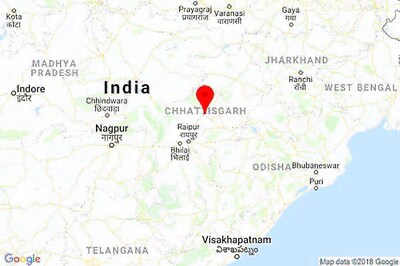
views
Scenes of animals being butchered on the roadsides in Cuttack have been raising many an eyebrow every now and then. While the standards of hygiene during slaughter are abysmal, inappropriate disposal of the waste by butchers have disgusted many. The practice, however, goes on despite the fact that open slaughter and sale of sheep, goats or chickens near the marketplaces or even on the pavements or roads is unhealthy and prohibited by law. The slaughter of animals comes under the purview of several laws. The Prevention of Cruelty to Animals Act, 1960, and the Prevention of Cruelty to Animals (Slaughterhouse) Rules, 2001, clearly lay down the modalities of slaughter and the responsibilities of public bodies that are responsible for dealing with related offences and fixing the penalty.Among other things, no animal is supposed to be slaughtered in sight of another animal and no animal not certified by a veterinary doctor as fit to be slaughtered is supposed to be killed.This apart, a person wanting to sell meat, chicken or fish has to obtain a licence on payment of an annual fee ranging between Rs 1,000 and Rs 2,000 from the civic body. Also, such businesses can only operate out of clean, glass-covered kiosks. Unofficial estimate point s out that there are 100-odd shops in the city where animals are slaughtered - while some have procured licences from CMC, a good many function illegally - though law permits animal slaughter only in licensed places.The shops’ operations run unchallenged and they remain hidden in marketplaces with no animal welfare regulation and poor water and drainage facilities. A major concern remains the waste that is discarded in the open by shopkeepers. They are indiscriminately disposed of in the sewerage daily; the putrefaction results in generation of poisonous gases.The waste consists of vegetable matter such as rumen, dung and stomach contents and animal matter including offal, tissues, meat trimmings and bones. City environmentalists have time and again pointed out the dangers from such waste if not properly treated and disposed of. They say the untreated waste and blood from slaughterhouses often enter drains. The Cuttack Municipal Corporation (CMC), however, maintains that action is being taken to curb the menace. “We have formed teams to conduct raids regularly on persons slaughtering or selling meat in open. Raids are being carried out at regular intervals,” said City Health Officer Swapneswar Gadanayak.On the other hand, even as the Odisha High Court had ordered the setting up slaughter houses to stop slaughter of goats and sheep on the roadside four years back, the CMC has made tardy progress regarding this. The civic body was directed to set up a big slaughter house at Matagajpur and smaller slaughter houses at Gandhipalli, Matamatha, Khannagar and Sati Chaura areas of the city. Only small slaughterhouses at Khannagar and Gandhipalli, Sati Chaura have been made operational till date.The High Court had on September 25, 2008 asked the district administration to provide land in Matagajpur and directed the CMC to construct and complete the slaughterhouse for big animals over the land within a period of three months from the date of handing over of possession. Accordingly, one acre land was provided for the purpose a year later on October 4, 2009 at Kantilo in Matagajpur area on the eastern fringe of the city.But the civic administration had to abandon the proposal of slaughterhouse for big animals at the allocated land owing to stiff opposition from the people of the area on grounds of proximity to residential area with concentration of several temples.




















Comments
0 comment